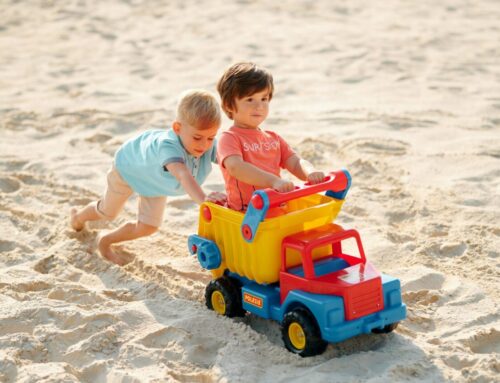
I don’t know about you, but I feel like the sound of moaning and whining tends to have a direct line to triggering my “reptilian brain”. It’s hard to be rational when a tiny human is making the hairs at the back of your neck stand on end. So, why do they do this? And what can we as parents do about it?
Let’s start with the why. You see, as babies, the only way that our children could communicate that they would like anything to be different to the way it was (hunger, boredom, poo nappy etc) was by moaning or crying. So, once they become toddlers, unless we teach them a better way to communicate, they will continue to use what has always worked.
Unfortunately, by this time, parents have become so “immune” to it, that they don’t realise what it is that is making them feel so edgy all the time. Parents find themselves irritable and easily annoyed because of the sensory overload that they don’t even realise they are being subjected to while snapping “Okay okay!” and giving the whining child what they have moaned for. This then teaches the child that, despite mom being a grumpy old fart, this is exactly the behaviour I should use again next time because it gets me what I want. And so the vicious cycle continues.
Unfortunately (or fortunately – depending on how you look at it), mothers are the emotional temperature gauge of the home. This puts a lot of pressure on us, but can also be quite a privilege too. If the mother is in a “mood”, it will snowball throughout the family which of course just exasperates the mother even more. Sometimes, you’ve just got to put on your big-girl panties and CHOOSE joy! Before you step out of your bedroom, give yourself a pep talk. CHOOSE to be the change you want to see in your family. CHOOSE to be the sunshine that brightens everyone’s morning. CHOOSE to be playful, funny, and have a sense of humour about your children’s mishaps. CHOOSE to focus on cherished moments rather than focusing on annoyances. CHOOSE joy, and the response that this will trigger in your family will then make joy your reality. Until then, fake it ‘til you make it!
A good attitude is caught, not taught. L.R Knost said, “When little people are overwhelmed by big emotions, it’s our job to share our calm, not to join their chaos”. If your toddler is moaning at you and you moan back at them “Stop moaning!”, they aren’t going to know what the alternative is. If you moan at them “Say please!”, they will moan “please!” right back at you. And if you use trigger phrases too early, like “Ask nicely” or “what’s the magic word?”, that also backfires:
Child whines: “I want an apple!”
Mom: “Ask nicely”
Child whines: “Pleeeease”
10 minutes later…
Child whines: “I want to go play outside!”
Mom: “Ask nicely”
Child whines: “Pleeeease”
10 minutes later…
Child whine: “Nooooo, I want the blue cup!”
Mom: “Ask nicely”
Child whines: “Pleeease”
Argh! Whining the word “please” is not asking nicely! So don’t use these trigger phrases until your child is nearly 4 years old and is able to ask with a beautiful attitude a good 80% of the time. Until then, use replacement behaviours. A replacement behaviour is about showing your child what to do instead of what they are doing – not telling them, but actually modelling the desired behaviour to them! The thing to keep in mind here is that attitude is far more important than words. So if they have a beautiful attitude, but didn’t get all the words right, that will do just fine. Similarly, if they got all the words right but their attitude stinks, they don’ t get to have what they want. Here’s an example:
Mother takes out a green plate.
Child whines: “Nooo, I want the blue plate!”
Mother responds with a smile: “No moaning, say *‘Please may I have the blue plate instead mommy?’”
Child replies with a smile: “Blue please mommy”
Mother replies with a smile: “Good asking nicely. Sure, I’ll get you the blue plate.”
*Note: It is imperative that when the mother models what she wants the child to say, she does so with a positive tone of voice, facial expression and body language. This teaches the child to have a good attitude. A good attitude is the key to long term character growth!
At times, you may have the child respond to your replacement behaviour with defiance, in which case you say empathetically “Oh dear, you didn’t ask nicely. Now I can’t give you the …” But most of the time, your smile will be contagious.
Replacement behaviours can be used from when your baby starts crawling well. This is when you can very successfully introduce baby signing and use this as your replacement behaviour. (Ask your local Munchkins parenting coach to teach you the baby signs for all your baby’s core needs.) For example, when your 10-month-old is moaning and tugging at your pants because he wants to be picked up if you pick him up, he will assume that this is exactly what is required the next time he wants to be picked up. Instead calmly say “No moaning”, followed very quickly with a bright and friendly face as you lift your arms up in the air (the baby sign for “up”) and joyfully say “Say ‘up’!” and then quickly pick him up cheerfully. Obviously, you wouldn’t expect your baby to actually do the sign before you pick him up unless he has done it independently a few times already – in which case, using the sign when given a replacement behaviour would then be required before he is picked up. Until then, model it and act on it quickly. Usually, your cheerful demeanour during this replacement behaviour stops the child’s moaning/crying just long enough to scoop him up so he doesn’t link any of the negative behaviour with being given what he wants. Follow this with a quick positive distraction, and you find yourself with a crawling baby that quickly learns to communicate effectively with a hand gesture and a big smile.





